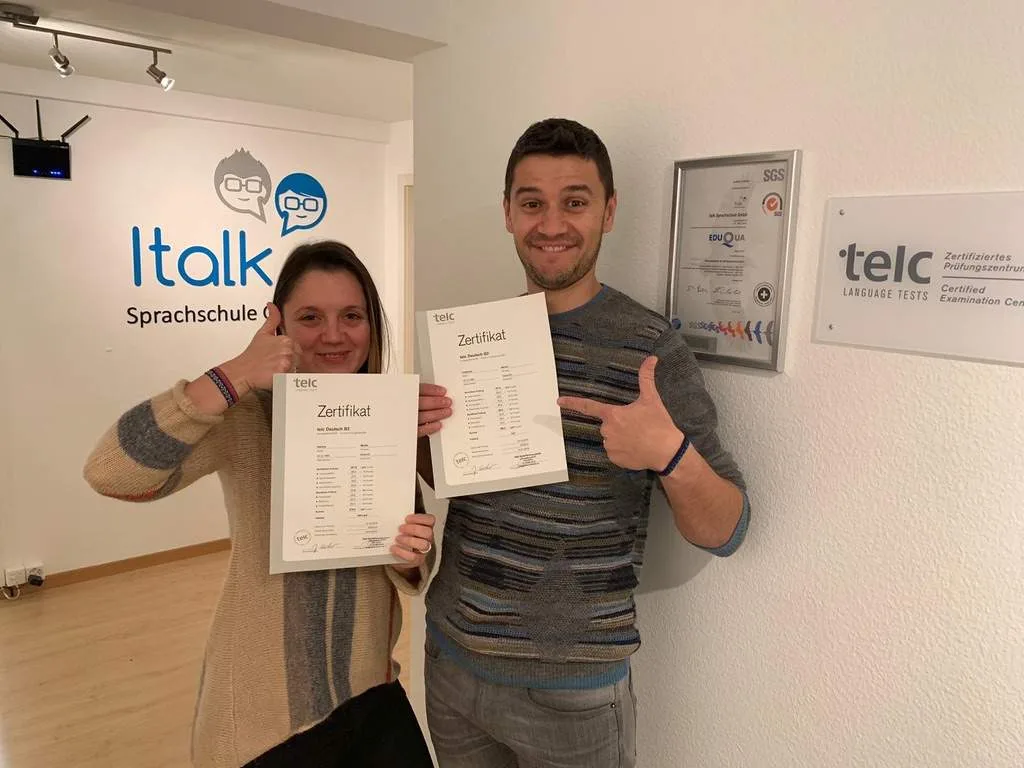Comprehending deutsch b1 zertifikat : A Comprehensive Guide
In today's globalized world, language proficiency plays a significant function in individual, academic, and expert development. One such commonly recognized procedure of language efficiency is the B1 certificate, a credentials that validates intermediate-level skills in a language. Whether you're requesting a house visa, advancing your profession, or exploring research study chances abroad, the B1 certificate can open doors to a range of opportunities. But just what is a B1 certificate, and why is it essential? Let's take a more detailed look.
What is a B1 Certificate?
The B1 certificate describes an intermediate level of language efficiency as defined by the Common European Framework of Reference for Languages (CEFR). The CEFR is a standardized framework used to determine and describe language abilities throughout different languages. It categorizes proficiency into 6 levels: A1 (beginner), A2 (primary), B1 (intermediate), B2 (upper intermediate), C1 (advanced), and C2 (proficient/native-like).
A B1 level shows that a person can deal with the essentials of conversation, reading, writing, and eavesdroping practical, everyday situations. It's often deemed a strong fundamental capability that applies in beneficial contexts such as work, school, travel, and social interactions.
Skills Represented by a B1 Certificate
Accomplishing a B1 certificate means that a person can:
Speak Fluently on Everyday Topics
A B1-level speaker can with confidence go over familiar topics like household, hobbies, travel, work, or local culture. Their speech may still contain grammatical mistakes, but they are generally understood by native speakers.
Comprehend Common Texts
At this level, people can read and comprehend texts written in high-frequency, daily language. This includes things like ads, short posts, and directions.
Write Simple and Clear Texts
B1 users can composing emails, notes, or essays that reveal viewpoints and describe experiences in structured sentences.
Understand Conversations
An individual holding a B1 certificate can comprehend the primary points of a discussion, speech, or statement, particularly when the language is clear and in a familiar context.
Who Needs a B1 Certificate?
The B1 certificate holds value in numerous contexts:
1. Migration and Residency
Numerous countries, consisting of Germany, the UK, and Canada, require evidence of language capability for migration or residency applications. For example:
In Germany, the B1 level is a prerequisite for permanent residency or citizenship.
In the UK, those looking for indefinite leave to stay or specific visas might require a B1-level accreditation in English.
2. Office Requirements

Companies in customer-facing or global functions typically demand a practical working understanding of a language that matches B1 proficiency. This ensures staff members can successfully interact with colleagues, customers, and partners.
3. Academic Programs
Some universities and schools need a minimum B1 level for admission into specific courses, especially foreign exchange programs or language-based studies.
4. Travel and Daily Life
Although it is not an official requirement for travel, having a B1 certificate enables individuals to navigate life in a foreign country with ease-- from asking for instructions to holding basic conversations.
How to Obtain a B1 Certificate
Making a B1 certificate generally includes passing an exam that examines your abilities in reading, composing, listening, and speaking. There are a number of internationally acknowledged companies that use B1 accreditation in different languages:
English (Cambridge, IELTS, TOEFL, and so on).
Common English B1 accreditations include:.
Cambridge B1 Preliminary (PET).
IELTS exams with a minimum of a total Band Score of 4.0-- 5.0.
ESOL International (Skills for Life).
German (Goethe-Institut).
The Goethe-Institut provides the "Goethe-Zertifikat B1" for those demonstrating intermediate German efficiency.
French (DELF).
The DELF B1 (Diplôme d'Études en Langue Française) evaluates intermediate French language skills.
Spanish (DELE).
The DELE B1 (Diploma de Español Nivel Intermedio) examines Spanish language capability at an intermediate level.
Before signing up for an exam, carefully review the test formats, practice materials, and eligibility requirements provided by the certifying body.
Tips to Pass a B1 Certification Exam.
Effectively passing a B1-level exam needs a mix of consistent study and useful experience. Here are some pointers:.
Immerse Yourself in the Language.
Routinely listen to podcasts, watch films, or read news short articles in the target language.
Practice Speaking.
Talk with native speakers or sign up with language exchange programs.
Concentrate on Grammar and Vocabulary.
A strong understanding of intermediate grammar and vocabulary is necessary. Work on syntax, verb tenses, and useful vocabulary.
Use Online Resources.
Numerous websites and apps such as Duolingo, Babbel, and Rosetta Stone use workouts specifically customized to B1 learners.
Take Mock Tests.
Acquaint yourself with the exam structure by trying sample papers from main exam suppliers.
What Comes After B1?
When you accomplish a B1 certificate, you can continue developing on your language abilities by advancing to the next CEFR level, which is B2. A B2-level certificate opens more expert, academic, and cultural chances as it shows even higher fluency and language proficiency.
Last Thoughts.
The B1 certificate is a lot more than a paper-- it's an entrance to new cultures, individual advancement, and expert success. Whether you're planning to live overseas, pursue a career in an international company, or just communicate with people from various backgrounds, the B1 accreditation is a valuable turning point in your language learning journey. With the ideal resources, devotion, and preparation, making your B1 certificate is more obtainable than you might think.
